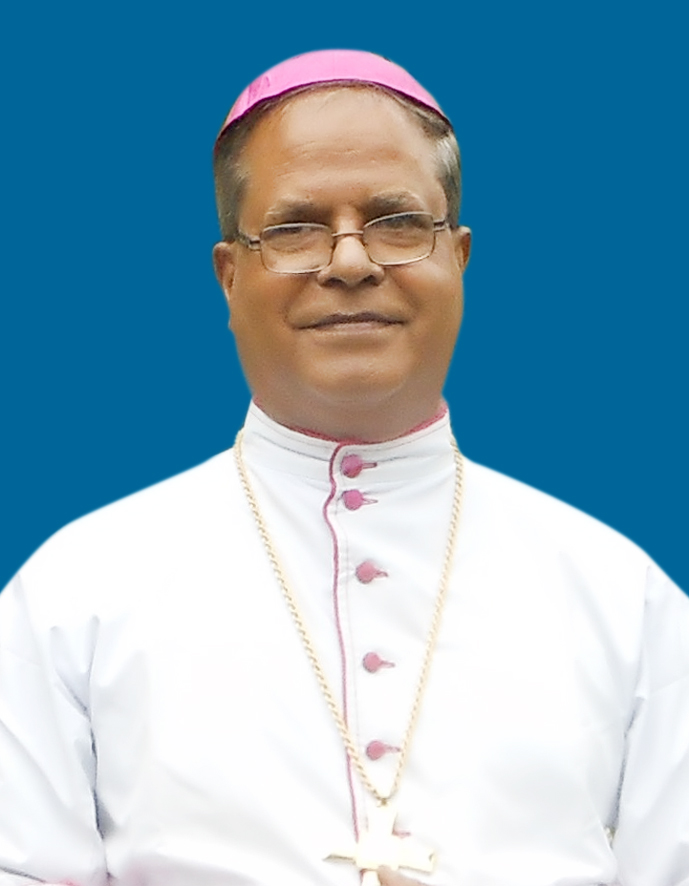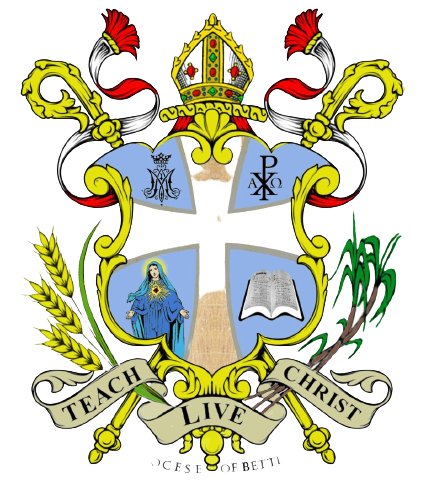In 1768 Fr. Joseph of Rovato was made the Prefect Apostolic of the Tibet Mission and he made his headquarters in Patna. In 1784 the northern part of the Vicariate of the Great Mogul was attached to the Prefecture of Tibet. In 1820 the center of the mission was shifted to Agra which was raised to the status of a Vicariate. This was because other Capuchin missionaries were working in Mhow, Indore, and Gwalior and had their headquarters in Agra. Thus these two missions became one.
In 1844 Athanasius Hartmann, OFM Cap, a Swiss Capuchin, arrived in Agra. On February 7, 1845 the Agra Vicariate was divided and the civil Province of Bihar, of which the main stations were Bettiah, Chakhni, Chuhari, Patna, Dinapore, Bhagalpur, Monghyr and Purnea, Nepal and Sikkim, was made into the independent Vicariate of Patna. On September30, 1845 Fr. Hartmann was chosen as the titular Bishop of Derbe and Vicar Apostolic of Patna. After twenty years of strenuous work in a territory that included the present states of Bihar, Jharkhand, Madhya Pradesh and Uttar Pradesh the saintly Bishop Hartmann died in Patna on April 24, 1866. He was succeeded by Bishop Paul Tossi, OFM Cap and then by Bishop Francis Pesci, OFM Cap.
In 1886 Bishop Pesci moved his see from Patna to Allahabad and the North Bihar Mission, with four stations (Bettiah. Chakhni, Chuhari and Latonah), was entrusted to the Tyrolese Capuchins in the same year
On April 20, l892 the Prefecture Apostolic of Bettiah was established as a suffragan of Agra. It had jurisdiction over the civil districts of Champaran, Saran, Muzaffarpur and Darbhanga and those parts of the districts of Bhagalpur and Monghyr that lie north of the Ganges River, i.e. the whole of Bihar north of the Ganges. The first Prefect Apostolic was Fr. Hilarion of Abtei, OFM Cap.
On May 19,1893 the whole of Nepal was added to this Prefecture.
By a decree of September 10, 1919 the Diocese of Allahabad was divided and the eastern part became the Diocese of Patna. The Prefecture of Bettiah was dissolved and it became part of the Diocese of Patna. Because of their nationality the Capuchin missionaries were not allowed to continue residing in the territory during the first World War and so the new Patna Mission was entrusted by the Holy See to the Missouri (USA) Province of the Society of Jesus.
The first Bishop of Patna Diocese was Louis Van Hoeck, S.J. a Belgian Jesuit working in the Ranchi Mission. He was Bishop of Patna from 1921 till 1928 when he became the first Bishop of the Diocese of Ranchi. His successor was Bishop Bernard Sullivan, S.J who guided the diocese from 1929 till 1946. In 1947 Fr. Augustine F. Wildermuth, S.J. was consecrated Bishop of Patna.
In 1980, when Bishop Wildermuth retired because of age, those parts of Patna Diocese that lie north of the River Ganges were made into the Diocese of Muzaffarpur.
Then, on June 27, 1998 by the Apostolic Bull “Cum ad Aeternam” His Holiness, Pope John Paul II separated the five Bhojpuri speaking districts in the northwestern part of the state of Bihar from Muzaffarpur Diocese and created the Diocese of Bettiah. The five districts in the new diocese are West Champaran, East Champaran, Gopalganj, Siwan and Saran. Rev. Fr. Victor Henry Thakur, a priest of the Diocese of Raipur as appointed the first Bishop of Bettiah.
Bishop Victor Henry Thakur was born and raised in Chakhni in the Diocese of Bettiah but chose to be a missionary in the Raipur Diocese. Thus his return to the diocese as Bishop was quite natural.
The new diocese did not have a separate residence for the bishop and so the parish priest of Bettiah at that time, Rev. Fr. Julius Lazarus, put four rooms in the presbytery at the disposal of the Bishop and his curia. Part of the Verandah in front of the Bishop’s room was partitioned off and made the Bishop’s office. Thus, till 2007 the Bishops and his helpers were guests of the parish priest of Bettiah. Quarters were congested but fraternity was more than ample



